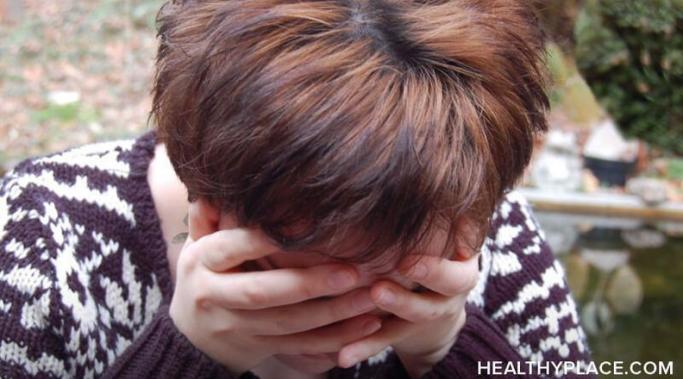If you have PTSD then you know what it’s like to feel unable to control your emotions. You’re walking along having a fine day when all of a sudden you hear a siren or a car backfires and you hit the deck or hide in the bushes.
Or, you’re feeling completely at ease in a conversation with someone and then all of a sudden a huge wave of anger courses through you and you react with vicious words and vehement aggression.
What’s happening in these instances? Your brain is processing information that makes it feel in danger, which causes it to send messages to your body, which activates your sympathetic nervous system that leads you to respond in either fight, flight or freeze.
Bottomline: Typical of anyone with PTSD you’re having trouble regulating your emotions. Not to worry, there are ways to counteract this.
PTSD Symptoms
After trauma and struggling with PTSD we all want two things: safety and control.
How do we get them? Sometimes by rather maladaptive coping techniques!
During my own PTSD decades (yes, I struggled for 25+ years!), one of the toughest things for me was having to be around other people when I felt horrible, depressed, anxious, angry, sleep-deprived and just generally dysfunctional.
In the Posttraumatic Stress Disorder Sourcebook, Glenn Schiraldi writes, “Life is feeling. Not to feel is to be dead.” That’s quite a statement considering, with PTSD, our biggest goal is to avoid our overwhelming feelings! It’s a tough conundrum: Coping and managing with PTSD requires you to dampen your emotions so that you can just get through the day. Healing, however, requires that you do feel your emotion – and get used to it. What’s a survivor to do?
So many of the survivors I work with and talk to express the same idea:
There are more than one of me in here!
Technically, they don’t mean there’s more than one personality inside their mind, so what do they mean?
If you're one of over 24 million people in the US who struggle with symptoms of posttraumatic stress disorder then you probably know exactly what it feels like to dissociate. When a situation, emotions or triggers cause you to feel overwhelmed, anxious, frozen or terrified the mind offers a typical (and really fantastic) coping mechanism: you go somewhere else in your head.
While dissociating can be a life-preserving response it can become a habit that severely inhibits PTSD recovery efforts. Part of healing means learning to become more present.
In 1981 a lazy doctor almost killed me. Who knows, maybe he was having a busy day, maybe he was hungry and just trying to get to lunch. Maybe he thought he knew so much about run-of-the-mill infections that he didn’t need to know so much about the unique disposition of individual patients. Whatever the reason, when I needed an antibiotic he failed to read my chart before prescribing a medication that my chart clearly noted as a possible danger.
What followed was a nightmare that lasted for over 25 years.
During my trauma, there was a moment so overwhelmingly horrific and painful that I literally willed myself to die. I became intensely still and allowed all energy to flow out of my body. Very soon, I felt myself leave my body and move toward a tunnel in the ceiling that was ringed with white light.
Obviously, I wasn’t successful in my death quest. But in that moment what did I experience?
I received an email from a client last week; he was very upset. Usually, he's the kind of guy who likes to travel on the drop of a dime but since PTSD began to control his life, he’s noticed that traveling takes an enormous toll on him.
After even the smallest trip, he wrote, "I have to sleep all the next day. Is this part of the PTSD profile?"
In a word: Yes.
If you struggle with PTSD, then you're no stranger to thoughts about how you could die by suicide to end your pain and anguish. Even the strongest and most resilient person may have moments so challenging the best idea seems to be death. Although you may sink to that dark space, there is a way to pull yourself out, away from thoughts of suicide.







